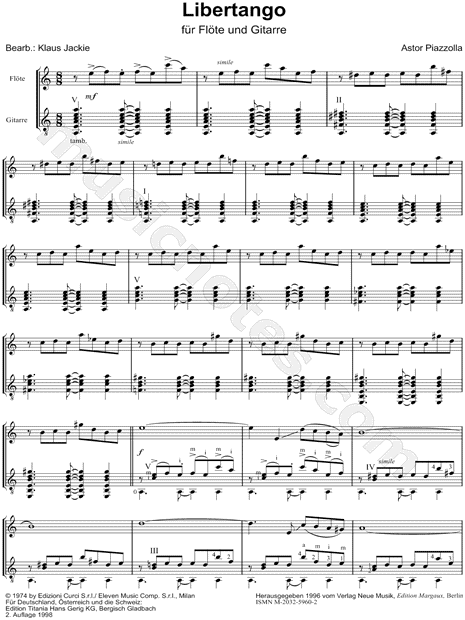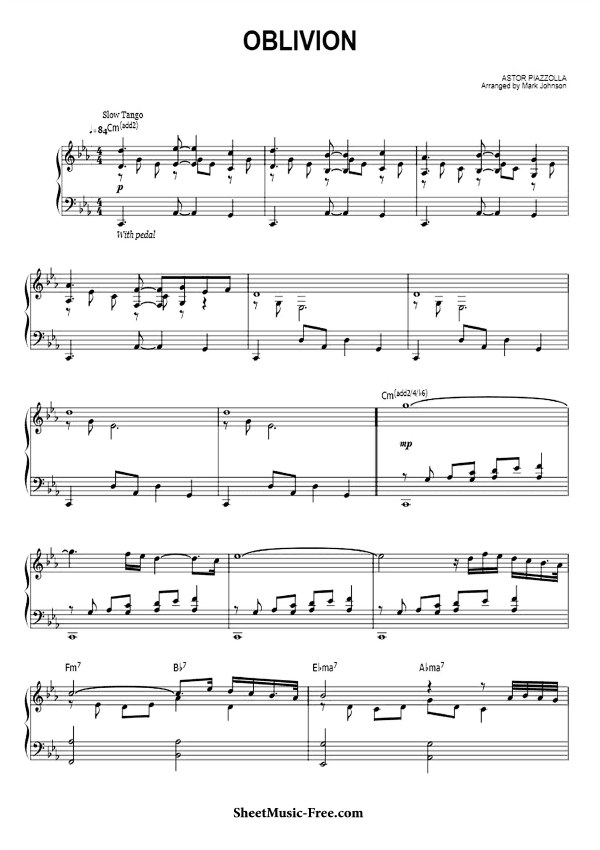
Astor Piazzolla – Oblivion
Piazzolla Oblivion Sheet Music
Althought Argentine composer Astor Piazzolla’s works revolutionized the traditional tango into a new style termed nuevo tango, incorporating elements from jazz and classical music. Brooks kubik chalk and sweat. Oblivion is one of his most traditional tangos, less jazzy and Bartókian than his other widely circulated compositions (like Libertango).ِ It was written in 1982 and became widely known when used in the soundtrack of Mario Bellocchio’s film, Enricho IV, the Mad King.
Astor Piazzolla Oblivion sheet music notes and chords arranged for Piano Solo. Classical Free preview. Download printable PDF. O reilly programming books torrent.
- DOWNLOAD Oblivion Piazzolla Guitar Pdf latest! Oblivion - Astor Piazzolla How to use chord combining to play some of the chords on accordion Minor 7th chords: (example - the Fmin7 in measure #5): To make a minor 7th chord, find the root note in the counter bass row (in this case, the F is above the Db bass button).
- Astor Piazzolla: Oblivion: Fanfare Band: Score and Parts. Flute or Violin and Guitar / Intermediate / 1 PDF / 1 MP3. Guitar notes and tablatures Sheet music.
- Piazzolla guitar (2924) Search Results. Documents 2847 results. Books 50 results. Sheet Music 2 results. Articles 25 results.
This short piece conjures up a complex mix of emotions which cannot be put into words. It has been recorded for different combinations of instruments, including guitar like guitarist Nadja Kossinskaja who did a nice arrangement for this piece with a beautiful sensation.
In addition to performing as a solo artist or in a duo, Nadja has been a soloist with several symphony orchestras.
Let’s find out more about Astor Piazzolla
Astor Piazzolla (March 11, 1921 – July 4, 1992) was an Argentine tango composer and bandoneón player. His oeuvre revolutionized the traditional tango into a new style termed nuevo tango, incorporating elements from jazz and classical music. A virtuoso bandoneónist, he regularly performed his own compositions with different ensembles.
Astor Piazzolla was the most important tango composer during the second half of the twentieth century. He studied harmony and classical music with French composer and conductor Nadia Boulanger. In his youth, he made orchestral arrangements for composer Aníbal Troilo’s works.

ِAfter returning from New York, Piazzolla showed strong influence of Jazz in his music, and create a new style “Tango Nuevo”, but when he began making changes to tango music, he was widely subjected to criticism from older tango musicians who described him as “traitor” and his music as ” not really tango”. However Piazzolla told them that “It is modern Buenos Aires’s music”.
During his career Piazzolla played with many famous musicians like Gary Burton, Tom Jobim, violinist Fernando Suarez Paz, singer Amelita Baltar, poet Horacio Ferrer, writer Jorge Luís Borge ….

Related Posts

Discover Playlists

Oblivion Piazzolla Piano Sheet Music
Piazzolla Oblivion Pdf
Listen to Music
Astor Piazzolla Oblivion Guitar Sheet Music
Piazzolla's nuevo tango was distinct from the traditional tango in its incorporation of elements of jazz, its use of extended harmonies and dissonance, its use of counterpoint, and its ventures into extended compositional forms. As Argentine psychoanalyst Carlos Kuri has pointed out, Piazzolla's fusion of tango with this wide range of other recognizable Western musical elements was so successful that it produced a new individual style transcending these influences. It is precisely this success, and individuality, that makes it hard to pin down where particular influences reside in his compositions, but some aspects are clear. The use of the passacaglia technique of a circulating bass line and harmonic sequence, invented and much used in 17th and 18th century baroque music but also central to the idea of jazz 'changes', predominates in most of Piazzolla's mature compositions. Another clear reference to the baroque is the often complex and virtuosic counterpoint that sometimes follows strict fugal behavior but more often simply allows each performer in the group to assert his voice. A further technique that emphasises this sense of democracy and freedom among the musicians is improvisation that is borrowed from jazz in concept, but in practice involves a different vocabulary of scales and rhythms that stay within the parameters of the established tango sound-world. Pablo Ziegler has been particularly responsible for developing this aspect of the style both within Piazzolla's groups and since the composer's death.